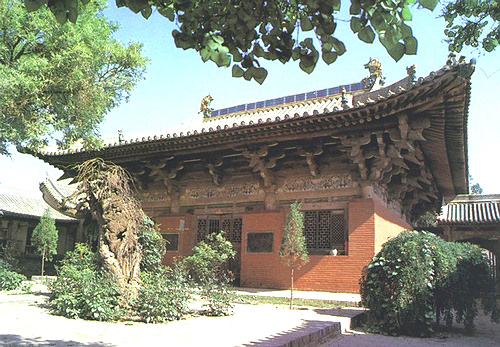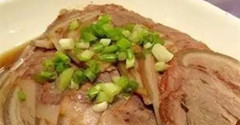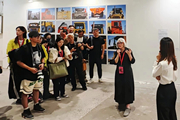Sights
Zhenguo Temple
Updated:2013-05-15 10:44( chinadaily.com.cn)
 |
|
Zhenguo Temple |
 |
|
10,000-Buddha Hall (Wanfo Hall) |
The temple was originally the Jingcheng (Imperial City) Temple and got its current name in 1540 during the reign of the Jiajing emperor of the Ming Dynasty (1368-1644).
The compound has an entrance to the front courtyard, with the Lokapala Hall, flanked by the Drum Tower and Bell Tower, and a central part with the 10,000-Buddha Hall (Wanfo Hall). The main building to the back has the Three Buddha Hall, with the Kwanyin Hall to its east and Ksitigarbha Hall to the west.
Of all the temple’s buildings, the 10,000-Buddha Hall is the best, with a wooden structure with a history of less than the Nanchan (Southern Zen) Temple and Foguang (Buddha Glow) Temple on Wutai Mountain in Shanxi province. The structure testifies to the genius of the work and incredible craftsmanship and has stood there for more than 1000 years, maintaining its original look. The three halls to the back all have Buddhist statues that have survived, with the exception of those in the Kwanyin Hall. Frescos from the Ming can be found in the Three Buddha Hall. There are also many old trees in the courtyards, such as the Chinese pagoda tree, with its umbrella-like crown, the most prominent, adding a touch to the quaint atmosphere of the temple.
The Zhenguo Temple was declared a key cultural relic with provincial protection, in 1965, and was put under state protection, on Jan 13, 1988. A month later, it was opened to the public. The old town of Pingyao and its two temples were added to the world heritage list,in Dec 1997. One of those two temples, the Shuanglin, is known for its colored statues, while the other, the Zhenguo, has amazed visitors from all over the world with its wooden structure.

Pingyao smoked meat
Pingyao smoked meat is an indispensable dish for locals at banquets and it is also hugely popular with tourists.


